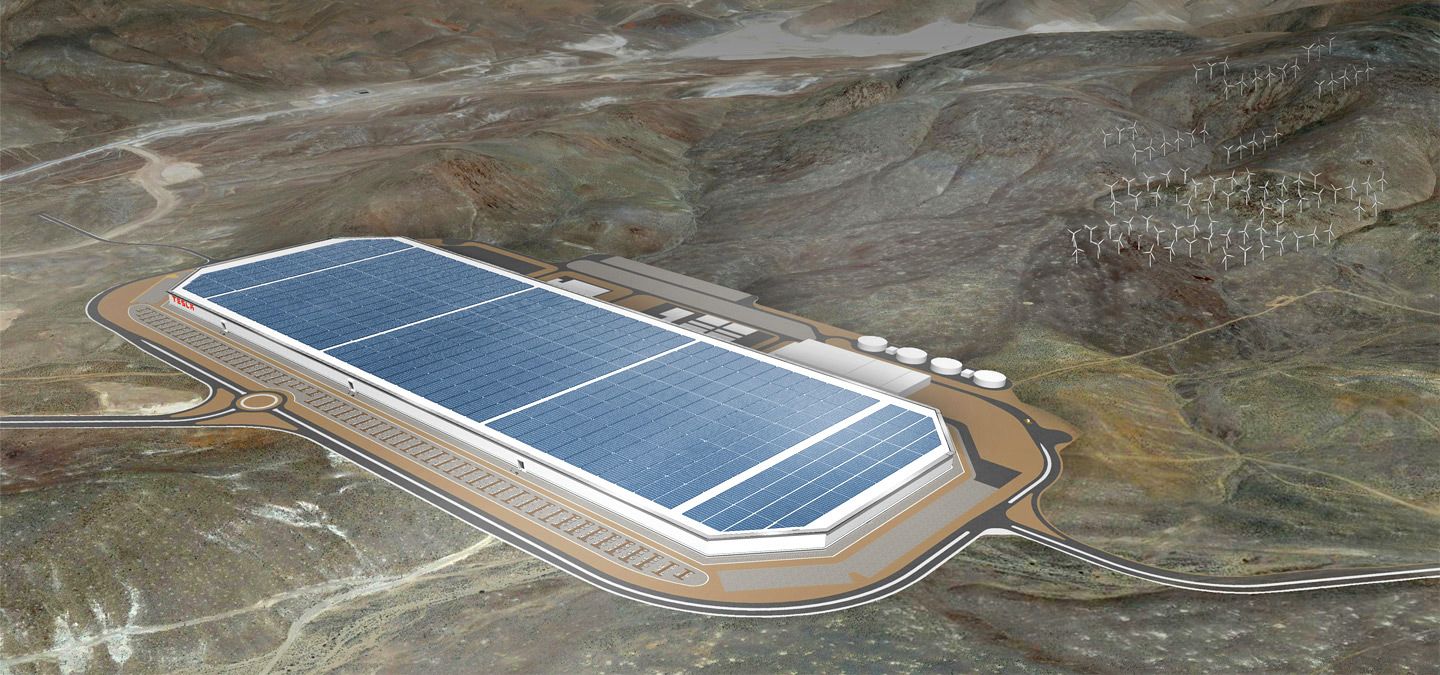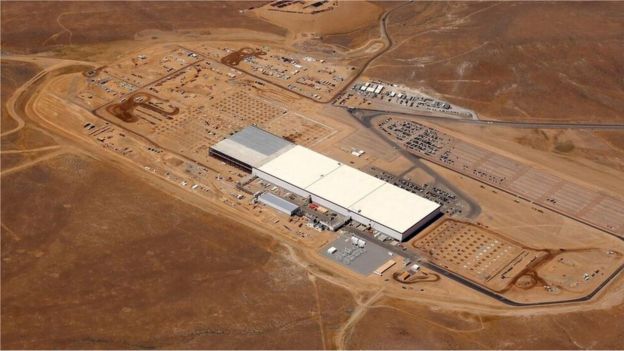

For
Elon Musk, having one Gigafactory isn’t enough. If all goes to plan, he wants to build Gigafactories on several continents.

Musk gave journalists a tour inside the company’s massive Gigafactory Tuesday at it’s grand opening celebration. The unflagging Tesla CEO told
BCC he wanted a factory “in Europe, in India, in China … ultimately, wherever there is a huge amount of demand for the end product.”
Indeed, demand is high for Tesla’s products—the company received nearly 400,000 pre-orders for its highly anticipated $35,000 Model 3 sedan.
The Gigafactory will manufacture lithium-ion batteries for Tesla’s electric cars and Powerwall products that store solar energy for homes and businesses.
To make its products, Tesla currently imports batteries from Japanese electronics company Panasonic. In order to meet Tesla’s
ambitious aim of producing 500,000 cars a year, it partnered with Panasonic to build the $5 billion Gigafactory in Sparks, Nevada to make the batteries locally to speed up production and slash costs. By manufacturing the battery cells onsite, Musk said Tesla will be able to innovate faster and cut out about 30 percent of the cost, according to BBC.
“Where the shipping costs start to become significant, the obvious way to combat that is to at least put a Gigafactory on the same continent,” Musk said.
.@elonmusk speaking to the media at the Tesla Gigafactory. pic.twitter.com/Rh41VqNK3y
— This Is Reno (@ThisIsReno) July 26, 2016
The Associated Press reported that the Gigafactory is only 14 percent built after two years of construction. The original projected completion date for the massive project was 2020 but Musk is ramping up construction. Around 1,000 people are working seven days a week on two shifts so the factory can start producing batteries before the end of the year, The Wall Street Journal reported.

Once construction is complete, the Gigafactory will be about
three-fourths a mile long at an enormous 10 million square feet—the size of 262 NFL football fields. Musk noted that the factory could eventually employ 10,000 people in the next three to four years.
Not only will the Gigafactory be the
world’s largest building by footprint when construction finishes, it will be powered 100 percent by renewables such as solar, wind and geothermal, and will feature energy-storage technology. The company also plans for the building to achieve net zero energy.
Musk tweeted that the building will recycle old batteries—which will be highly necessary as Tesla aims to nearly double the world’s production of lithium-ion batteries.
Should mention that Gigafactory will be fully powered by clean energy when complete & include battery recycling
— Elon Musk (@elonmusk) July 27, 2016
Tesla wants the Gigafactory to be a global powerhouse. As the Associated Press described of the company’s goals:
Tesla says the factory will be producing 35 gigawatt hours of batteries by 2018. That’s the equivalent to the entire world’s production in 2014. Tesla CEO Elon Musk has said the factory has the capacity to produce 150 gigawatt hours if it needs to. To put that in context, New York City uses around 52 gigawatt hours of energy per year.
Musk has long
advocated for a sustainable transportation future, and recently made a $2.8 billion move to acquire SolarCity to basically allow Tesla customers to drive on sunshine.
Last week, the entrepreneur further explained his grand plans when he unveiled his
Master Plan, Part Deux. Climate Nexus summarized Musk’s goals in four bullet points:
- Create stunning solar roofs with seamlessly integrated battery storage
- Expand the electric vehicle product line to address all major segments
- Develop a self-driving capability that is 10X safer than manual via massive fleet learning
- Enable your car to make money for you when you aren’t using it
“Given that we must get off fossil fuels anyway and that virtually all scientists agree that dramatically increasing atmospheric and oceanic carbon levels is insane, the faster we achieve sustainability, the better,” Musk wrote.
.@ElonMusk Unveils @TeslaMotors's 'Master Plan' https://t.co/ET0FxRFBw0 @sierraclub @greenpeaceusa @NRDC @EnvDefenseFund @ClimateReality
— EcoWatch (@EcoWatch) July 21, 2016

 233k
233k  41k
41k  Subscribe
Subscribe 